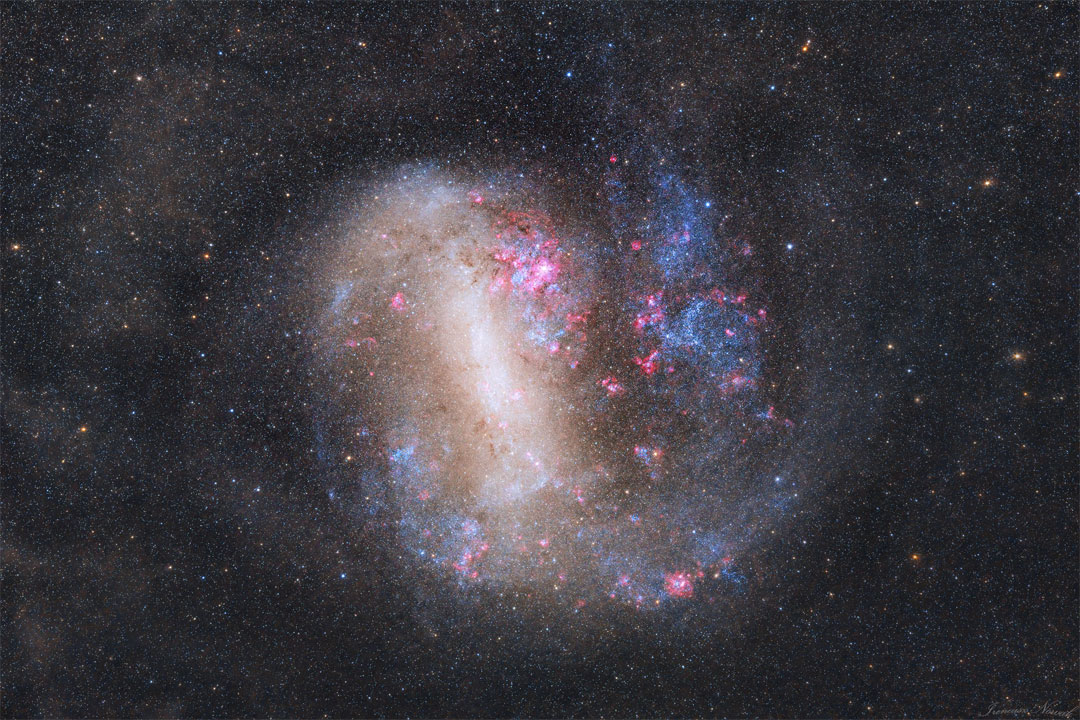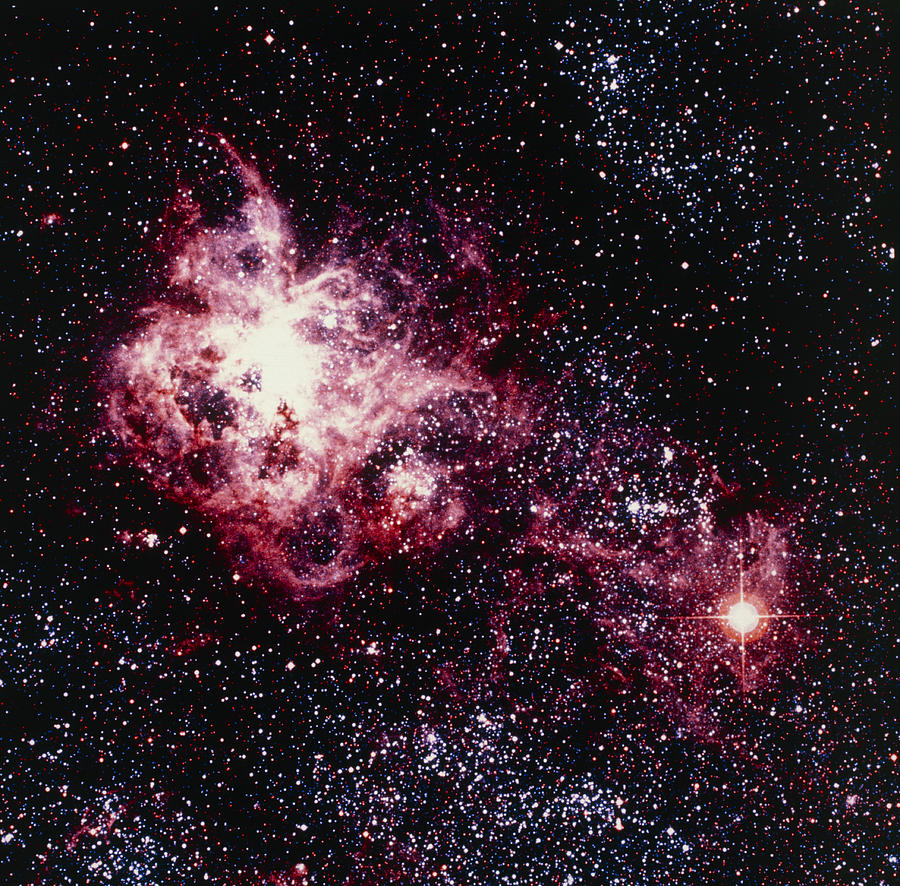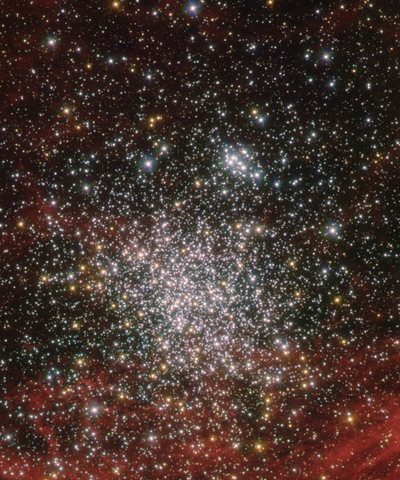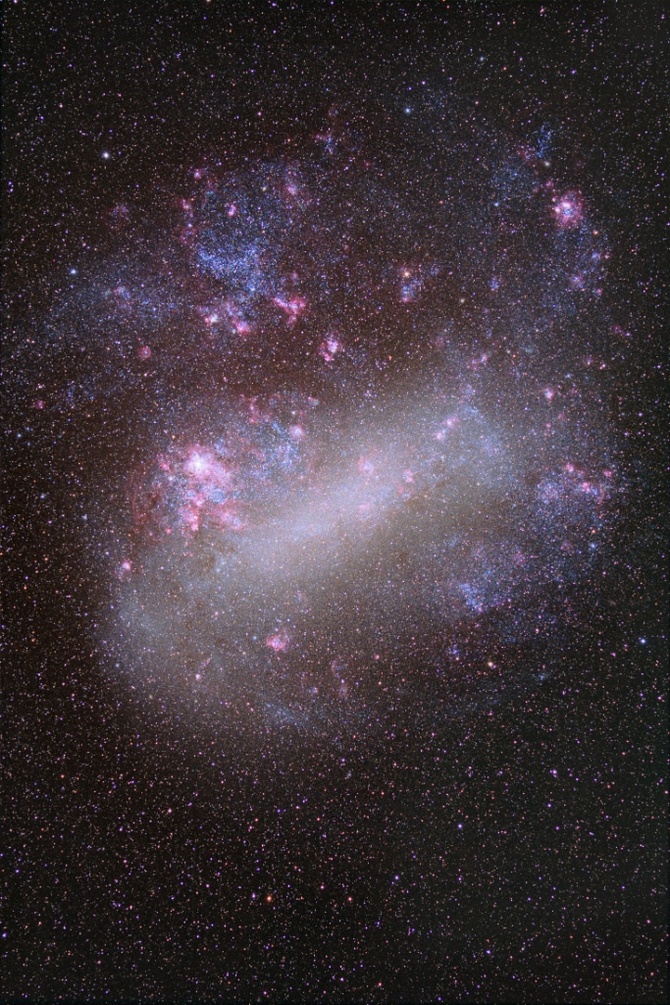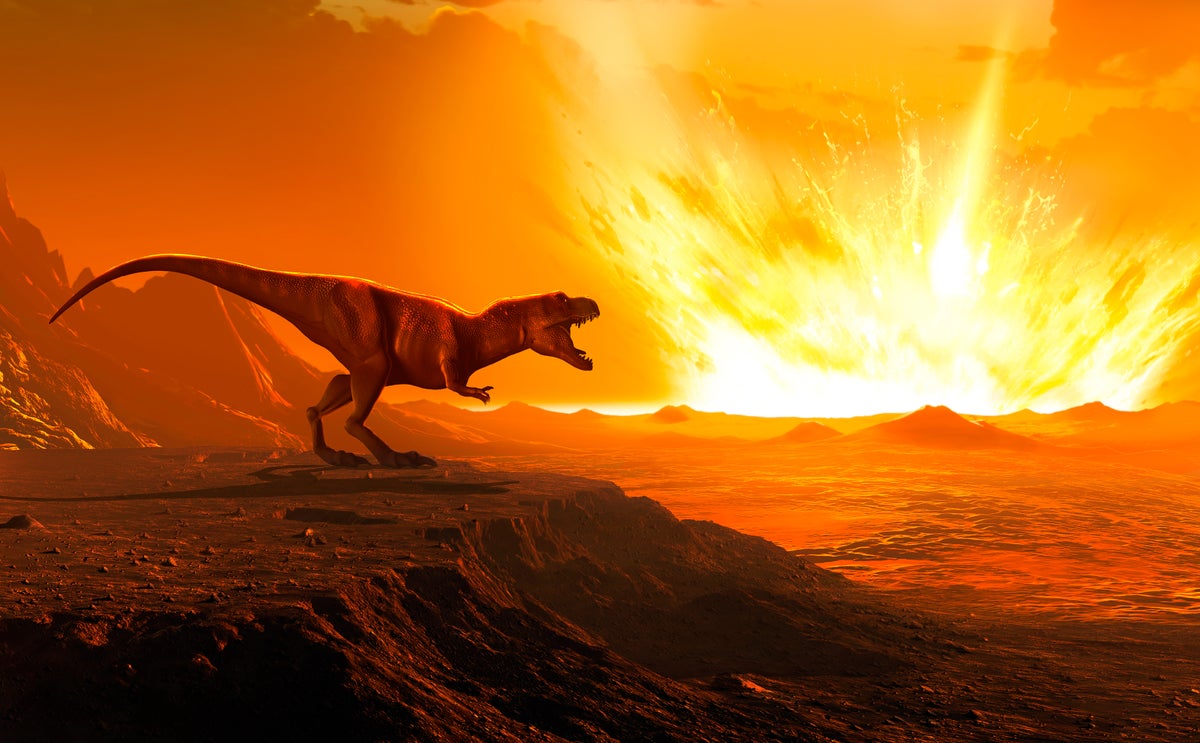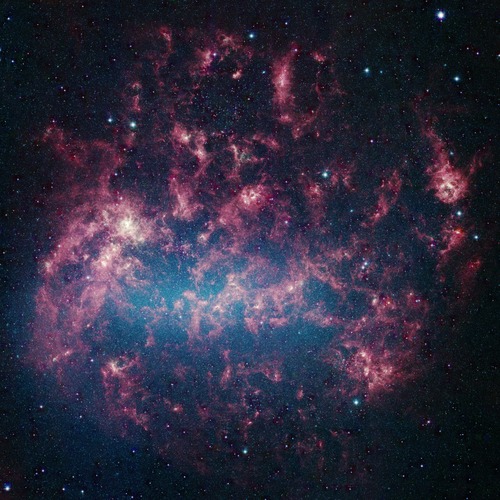Talk about the Large Magellanic Cloud? Where to start? Well... that's a gorgeous APOD!
Okay. If my annotations are hard to read, I'm sure you can see the long bar of the Large Magellanic Cloud (the LMC). The large pink splotch to the upper right of the bar (in this picture) is the Tarantula Nebula, the the most active star-forming region in the Local Group according to
Wikipedia. To the lower left of the Tarantula Nebula (in this picture) is the remnant of the closest supernova recorded by humans since the 17th century, SN 1987A.
Inside the bar, but near the lower left end of it, is young globular cluster NGC 1850.
Wikipedia wrote:
NGC 1850 is a double cluster and a super star cluster in the Dorado constellation, located in the northwest part[3] of the bar of the Large Magellanic Cloud, at a distance of 168 kly (51.5 kpc) from the Sun. It was discovered by Scottish astronomer James Dunlop in 1826.
This is an unusual cluster system because the main distribution of stars is like a globular cluster, but unlike the globular clusters of the Milky Way it is composed of young stars. The only similar object in the Milky Way is
Westerlund 1. The main cluster has the appearance of a globular cluster with an age of 50±10 Myr. The second is a more loosely distributed sub-cluster with an age of 4.3±0.9 Myr, located at an angular separation of 30″ to the west of the main cluster.
I don't have much to say about the large blue ring in the LMC, except that I want you to pay attention to it. I guess that something enormously energetic must have taken place inside it.
Little-known N11, which so often gets overlooked when the LMC is photographed, is actually the second largest nebula complex in the LMC!
Wikipedia wrote:
N11 (also known as LMC N11, LHA 120-N 11) is the brightest emission nebula in the north-west part of the Large Magellanic Cloud in the Dorado constellation. The N11 complex is the second largest H II region of that galaxy, the largest being the Tarantula Nebula. It covers an area approximately 6 arc minutes across. It has an elliptical shape and consists of a large bubble, generally clear interstellar area, surrounded by nine large nebulae. It was named by Karl Henize in 1956.
Okay, so how important is the LMC as a galaxy? Well, which is the fourth largest galaxy in the Local Group?
Ta-daaah! It's the Large Magellanic Cloud!
While smallish, the LMC is not a dwarf galaxy. Its mass, according to
Laura L. Watkins et al., is circa 17% of the mass of the Milky Way. That is not negligible. Oh, and Wikipedia claims that the mass of the LMC is "roughly one-hundredth the mass of the Milky Way", but you shouldn't take that seriously. Wikipedia is quoting an Encyclopedia Britannica source from 2009. The Laura Watkins source is from January 2024.
But did you know that the Large Magellanic Cloud will be our doom?


Space.com wrote:
You may be aware that the huge and beautiful spiral galaxy Andromeda will plow into the Milky Way about 5 billion years from now, livening up the night skies of any Earth creatures who are still around to look up.
But one of our smaller galactic neighbors, the Large Magellanic Cloud (LMC), will actually hit the Milky Way about 2.5 billion years before the epic Andromeda event, according to a new study.
"The destruction of the Large Magellanic Cloud, as it is devoured by the Milky Way, will wreak havoc with our galaxy, waking up the black hole that lives at its center and turning our galaxy into an active galactic nucleus or quasar," lead author Marius Cautun, a postdoctoral fellow at the Institute for Computational Cosmology at Durham University in England, said in a statement.
Oh no!!!

Imagine being hit on the head by a galaxy weighing 17% of the mass of the Milky Way!


I think the asteroid that killed the dinosaurs is dwarfed by this!
All things considered, I think the LMC ramming our galaxy will cause more damage than that asteroid that hit us 65 million years ago. Do you think we could find shelter on Alpha Centauri?
Ann
 The Large Magellanic Cloud Galaxy
The Large Magellanic Cloud Galaxy